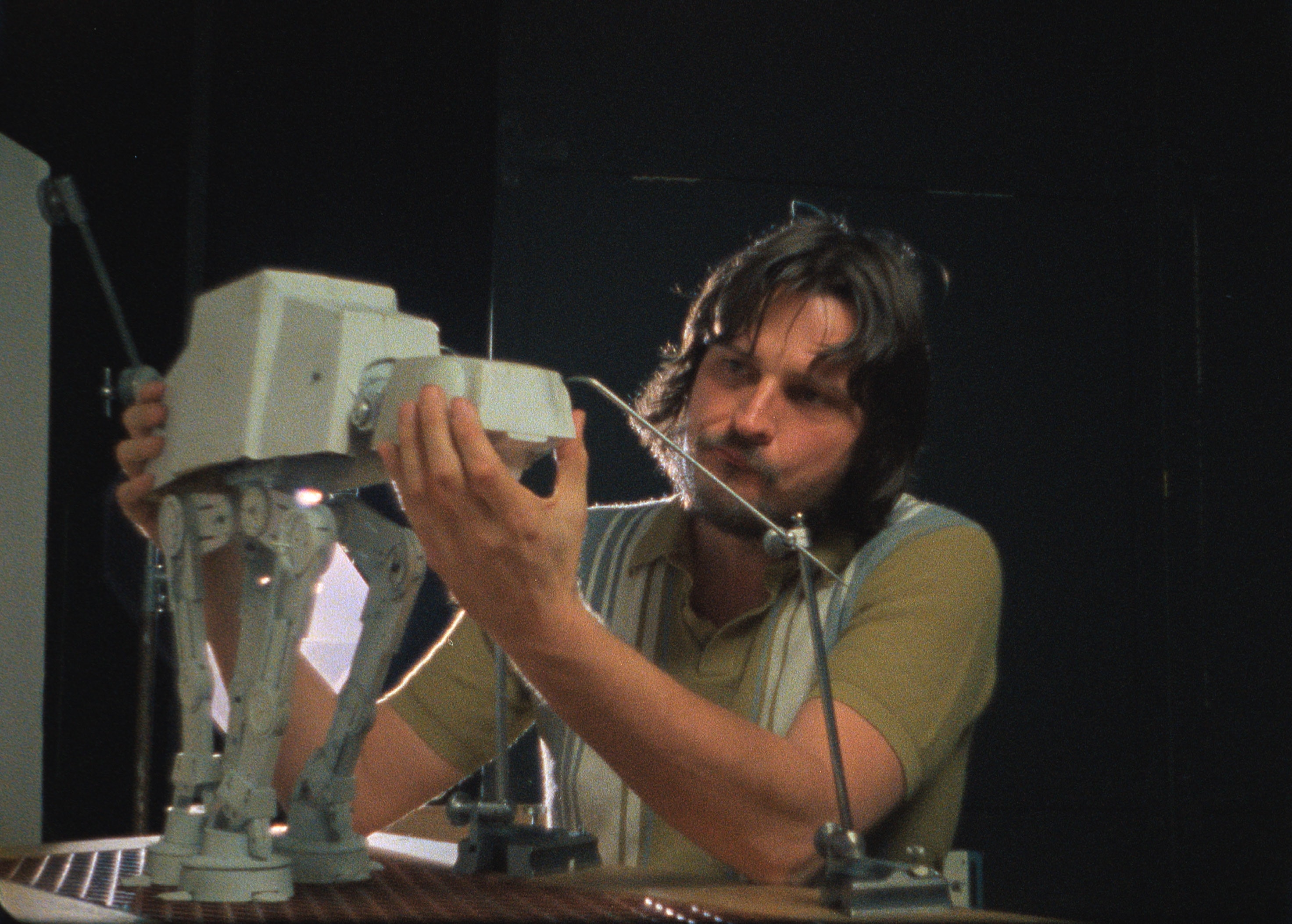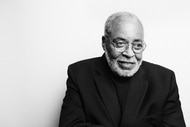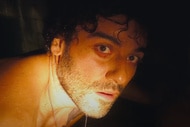Create a free profile to get unlimited access to exclusive videos, sweepstakes, and more!
Lawrence Kasdan, Dennis Muren, and Phil Tippett reflect on their favorite ILM effects in 'Light & Magic'
With the release of the Disney+ docuseries, Light & Magic, director Lawrence Kasdan, and VFX legends Dennis Muren and Phil Tippett share some VFX memories.

In May, George Lucas' visual effects company, Industrial Light & Magic (or ILM) celebrated its 47th year creating practical and digital visual effects for film and television. The company was formed to create the effects for Star Wars: A New Hope, and today they're working on projects across the spectrum of storytelling, including Dungeons & Dragons: Honor Among Thieves, Avatar: The Way of Water, and all of the Disney+ Star Wars series, just to name a few.
To celebrate the company that literally changed the entire industry of visual effects, starting with practical special effect techniques and then shifting in the '90s to digital VFX and CGI (or computer-generated imagery), Lucasfilm and director Lawrence Kasdan created a six-part docuseries, Light & Magic, to track the long history of ILM from it's inception to what it continues to conjure on screens today. The Light & Magic episodes feature incredible archival footage of George Lucas and the first years of ILM in Van Nuys, California, as well as interviews across the four decades of the company with VFX legends including John Dykstra, Richard Edlund, Dennis Muren, Joe Johnston, Phil Tippett, and many more from the current era of the company.
SYFY WIRE recently got on the phone with writer/director Lawrence Kasdan and VFX experts, Dennis Muren and Phil Tippett — all three of whom are long-time Lucasfilm and ILM collaborators — to talk about how ILM framed their incredible careers and the VFX that they consider to be the highlights in their creative careers.
For Kasdan, Light & Magic is the first documentary on his long resume. But its topic, ILM and visual effects, aren't really a hallmark of Kasdan's own directing oeuvre which is largely comprised of dramas the likes of Body Heat, Silverado, The Bodyguard, and Wyatt Earp. The director tells SYFY WIRE his ambition was always to direct, but he fell into the world of visual effects by accident when Steven Spielberg bought his script for the film, Continental Divide, in the late '70s.
"The first thing he said to me was, 'I want you to meet George Lucas. We're going to do a movie together.' And that was an amazing bit of luck for me. It was so incredible and unbelievable that it took me a long time to realize what had happened," Kasdan remembers. "I had been trying to get in the business for seven years, writing scripts without any luck. A month after that, I was in a little house in Sherman Oaks working out the story for Raiders of the Lost Ark. That's kind of mind-blowing, you know?"
It was collaborating on visual effects-heavy scripts with Spielberg and Lucas that gave him an appreciation for what ILM was created to do. "One thing I learned immediately from George was he never said, 'Think about the budget.' He never said, 'Tell me how we're going to do this?' That's what he had ILM for," he explains. "And if you talk to people there, they were trained, intuitively, to never say we can't do that. I never heard that once in the whole time I was putting this together. And this covers 40-50 years," he says with some awe. "Everybody wanted to say, 'Well, we can do that. I don't know how, but we will figure it out.'"
Two of the geniuses "figuring it out" at ILM were Dennis Muren and Phil Tippett. Close friends and collaborators to this day, having worked together on Tippett's 30-year passion project Mad God released this year, the two tell SYFY WIRE that Light & Magic was a project that made them actually look back on everything they'd done in their deep careers.
"It was much more in depth than anything else that I've done before," Muren says of the documentary's interviews and requests for them to dig into their personal archives." They were digging deeper and deeper for older stuff. I literally had to go through boxes of stuff. And that just feeds my memory and my curiosity. It's pretty neat now to have this done. I mean, I have just a huge amount of stuff and before this, it was just buried away and forgotten."
"The [doc] is great for our kids because we were away that whole time," Tippett says, thinking back of the work they did at the two ILM offices, first in Van Nuys and then Marin County. "You come back from work and teenagers are not even interested in what you're doing. So it's a particularly good document for that, and then for me."
Asked what projects as ILM has the most personal impact on their creative minds, the three all say it's tough to choose. But Kasdan offers Raiders of the Lost Ark as an example of a movie that worked on all levels, from story to visual effects. "It was astounding that I got to do that. And it didn't get made until after Star Wars: The Empire Strike Back, but I had written it first. And it's always for me the model of what the relatively primitive effects were. [Toht's] melting head would look completely different now if you did it digitally. But the fact that it looks a little bit hokey, that's what I love about it."
Muren says that E.T. the Extra-Terrestrial, which turned 40 this year, still reflects the genius of Spielberg's storytelling. "I really enjoyed the film and I thought that we did a good job in heightening the moments, trying to figure out where the emotion is for the audience for each [VFX] shot," Muren says. "And then try to make it look as photographically real as we can because it's supposed to be, but then everything's heightened too. Everything is off a bit. Colors are a little amped, the angles may be a little a tweaked. And that is essentially what a cameraman does, or some of them do, and what [cinematographer] Allen Daviau did on that show in intensifying the moments. And that's what I was trying to do on the shots we did for that too. And that was, I think, our second use of Go Motion on that show for all the bikes and everything flying around."
Asked which directors, including greats like Spielberg, Lucas, and James Cameron, that they enjoyed working with the most during their years at ILM, Tippett and Muren says that each were singular and challenged them in different ways.
"They all had different problems they needed to do, but every one of them just said, 'Give it a try. Not that you have to do it, but give it a try and we'll see where we can get.'" Muren explains. "They're all very similar. They're all have great imaginations and they're open to ideas."
"Paul Verhoeven didn't know jack s*** about visual effects and so he just trusted me," adds Tippett with a laugh. "He thought I was a genius because he didn't do this s*** Dennis and I on Starship Troopers and RoboCop, we used a lot of the same tricks that Ray Harryhausen used. If you don't know the secrets, it's like a magician doing something. But actually, there's a lot of work, though it's relatively straightforward."
Light & Magic is available to stream now on Disney+.


























